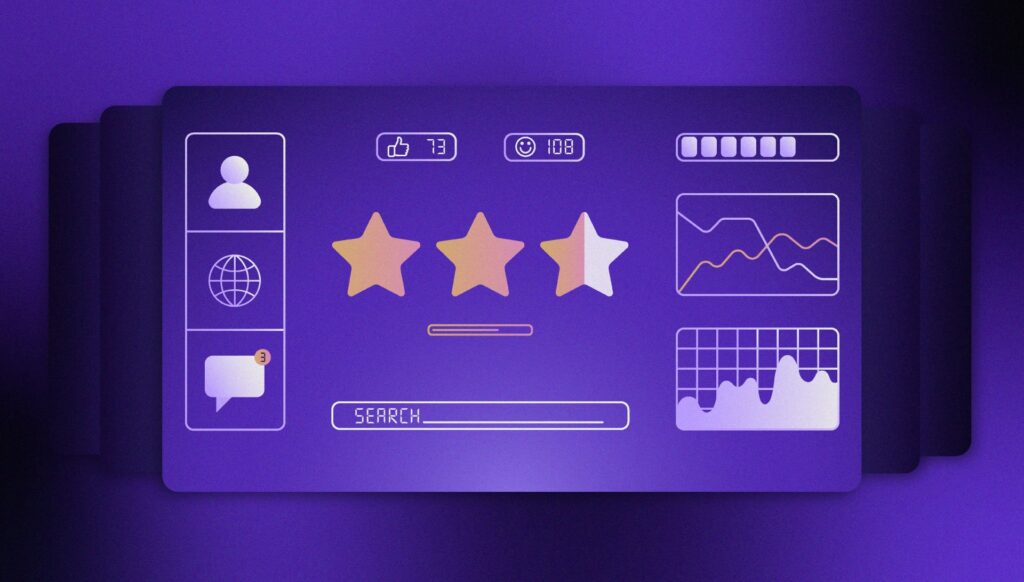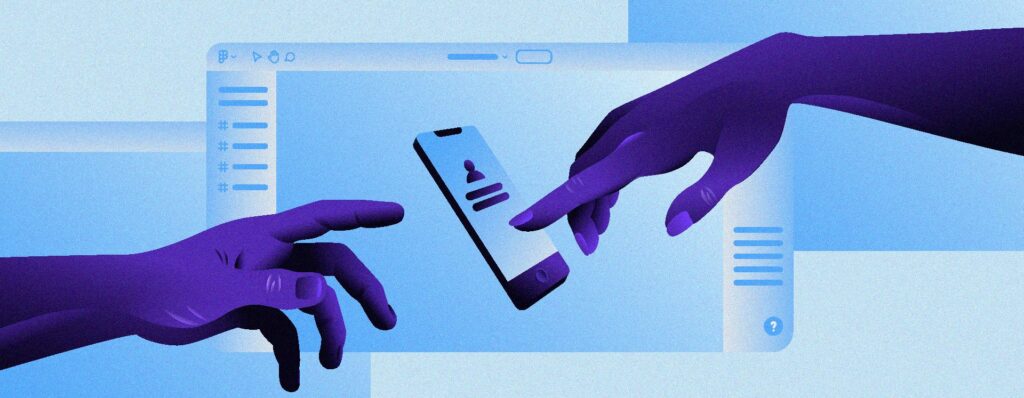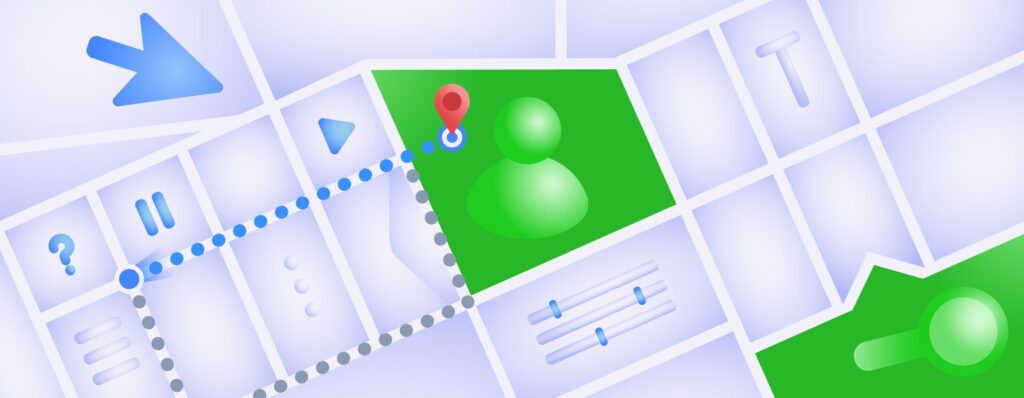12 questions a designer should ask before embarking on a project
Before beginning a design project, there are a few important questions you should consider. Some of these questions will be directed at you, the designer, but the vast majority will be directed at your client.
You can satisfy your clients’ desires and create opportunities for them in return by asking the right questions and understanding their desires, needs, and goals.
So, in this article, we’ll look at 12 questions a designer should ask before kicking off a project. We hope this article can be a point of reference that you can return to help you navigate the project process.
Why are these questions important?
Asking questions comes with a lot of benefits for the project and the designer. These include:
Direction
It’s bad enough to start a project blindly, but it’s even worse to discover mid-project or at the end that you went in the wrong direction.
All the answers you get will help you know where you’re going and give you an idea of what the outcome should be.
Return to these questions and answers whenever you feel the project is veering off course. This enables you to see where you’re going wrong, reconsider your strategy, and get back on track.
Clarity
Asking the right questions is important. When you ask the wrong questions, you will get answers—but those answers will do nothing for you in terms of clarity.
The goal of asking these questions is to find out the objective and variables of the work you’re doing. Each question you should ask should clarify the project more. The more questions you ask, the closer you get to the project. Nir Eyal says in his best-selling book, ‘Hooked’, that “only an accurate understanding of our user’s underlying needs can inform the product requirements.”
Confidence
You give your clients confidence that you understand their needs by asking and listening to them. It improves their understanding of the design process. Those who are torn between options or have no clear idea of what they want can benefit from answering these questions because it gives them a more solid definition of what they want. This increases their trust in your abilities and allows them to come to terms with you, especially in the area of your rates.
Being aware of what your client requires gives you confidence. This increases the likelihood that you will be able to produce an output that will satisfy your customer. And a satisfied customer often means a glowing review and referrals.
Questions a designer should ask their client
1. What inspired you to create this project?
It’s critical to understand why your client wants to do the project, whether it’s to design a new product from scratch or to redesign an existing one. This question allows you to learn about the project’s motivation and purpose.
Inquire about the company’s core values as well as the meaning behind the company name and logo. Some of these may provide hints as to what is at the heart of what they want the design to reflect.
2. What do you hope to accomplish with this project?
This is a very important question. You’re not only asking for the expectations they hold about the project. You are trying to learn what they’re expecting from your team and their hopes for the project. Aim to go above and beyond this expectation.
If they are rebranding, find out what they disliked in the previous project. When you determine what the issues are, you stand a better chance of a satisfactory solution.
3. Where will the design be used?
Make sure to discover which medium will be hosting the design. Is it for a mobile app, a website, both, or a web app? Is it digital-only or is print included too?
Is it going to be an iOS-only or an Android-only app? These answers will help you in choosing layout and font types for your design.
4. Who is your target audience?
Asking your client to define their target user personas is vital to delivering the human-centered design ethos at the heart of Design Thinking.
There are many theoretical approaches to defining a persona. You can construct a persona based on:
- Goals—a goal-based persona foregrounds what they want to achieve, tasking you with working out how to deliver what they want to achieve.
- Tangible fictitious qualities—a design team can use data to create a realistic, well-rounded persona. Going beyond a generic character to one that feels real, a design team can better picture how they might feel frustration or satisfaction during their user journey.
But as with anything that depends on assumptions to a degree, developing personas comes with pitfalls. Demographics can be an important part of creating personas, but you risk introducing bias into your work. Equally, you need to be sensitive to cultural concerns or taboos of the people you’re targeting. If it’s not sending the right message to those it should appeal to, you must change it. Always bear the desires, needs, and wants of your target group in mind. You’re not designing for yourself but for an audience.
5. Who do you consider your competition?
Whether direct or indirect customers, every business, service, or product has competitors. Learn the competitors of the product you’re building and how your design helps the products stay ahead of them.
6. What kind of style do you want?
What kind of aesthetic is your client looking for? What design elements and styles do they want to see in their design? This can be a difficult area to navigate, especially when it comes to reconciling what the designer believes will work with what the customer desires.
If you suspect that something in the customer’s system isn’t working properly, try to explain why. Working with a client with whom you disagree on design requires tact and firmness.
7. What’s the budget for this project?
Make your rates known to the client as soon as you can. Don’t be tempted to lower your rates, be honest about what you charge for your services.
If they think your prices don’t align with their budget, the design they want is more expensive than the budget allocated, try breaking down the charges. Seeing where the costs are coming from can help them decide what they want to change to lower the price.
8. How can you be reached?
Communication with the client and stakeholders is vital when working in design. Find out from them what mode of communication is easier, whether email, messaging services like Slack, or video calls.
Also, find out how frequently you need to be communicating. Some clients will require little to no interaction till the end of the project, others will be more hands-on following the progress more closely. milestones.
9. What’s the time allocated for the project?
Agree with the client on a time frame that will benefit both of you. The time should be an adequate timeline to get the product finished within the given time frame. Add more time than you’ll need as a contingency in the case of emergencies.
Questions a designer should ask themselves
Now, as a designer, you have responsibilities to yourself when embarking on a project. Ask yourself these questions to ensure you can do yourself justice as well as the client.
10. Do I understand the scope of this project?
You must be confident that you fully understand how to translate all the answers the client gives into a solid project that will give your client results. If it still feels like there are areas where you need more clarity, talk to the client, a more experienced designer, or anyone who can provide a broader perspective. Wading into a project you don’t fully understand is going to make the design journey harder than it needs to be.
11. What are the risks in this project?
Every project comes with a measure of risk. Risks are circumstances, scenarios, activities, or variables that occur during the execution of a project. It can affect the progress, targets, results, resources, timeline, and budget of a project.
Defining these risks before they occur allows you to prepare a plan for avoiding them or mitigating those that cannot be controlled, such as your client causing delays or your designers falling sick a few weeks before the website’s launch. You must have strategies in place to stop risks negatively impacting your work.
12. Have I done a similar project before?
Experience with similar projects can be a big help. Whether the experience is good or bad counts towards helping your design be a success.
Good experiences tell you what worked in this previous project. But don’t assume that the same will work for your client. If the client’s proposed design aligns with your previous work, then your job has been made a bit easier. Borrow good features from similar projects to boost the design. Jakob’s law tells us that the familiar is often a good thing in design.
Bad experiences with previous designs also help because it lets you know what does not work. This makes it easier to eliminate the option instead of making the same mistakes all over again. Make sure you’re communicating with the client before implementing them.
Conclusion
Situations will vary according to the different brands and what they want. By no means are they meant to be a rigid constraint but rather a fluid guideline. They can be a baseline or a starting point for further questions as the case may be.
Having a team of experienced designers is a huge plus, you have a variety of questions from those who have successfully done the design process from start to finish. This and more why our team of expert designers at Windmill Digital is perfect for all of your design needs.
Contact us here for more information.




